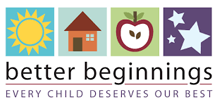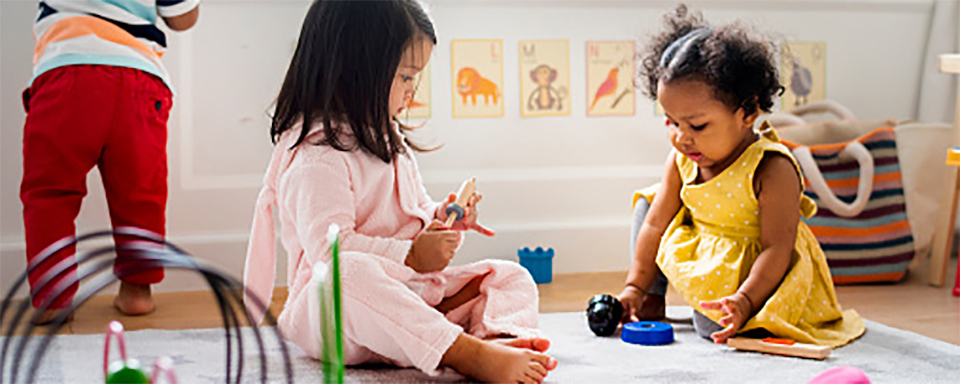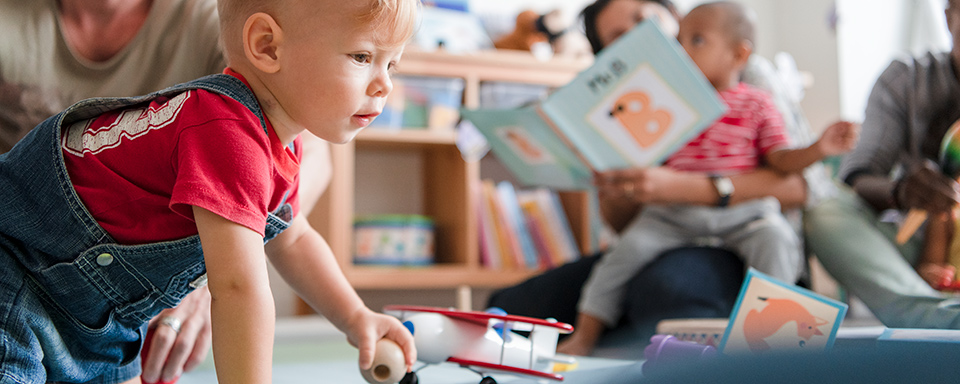Encourage your child to listen and use language to express ideas.
Focus on Kindergarten Readiness Indicators
- Performs up to three-step directions
- Uses four- to six-word sentences
- Understands and uses words such as inside, outside, up, down, over, or under
- Expresses basic emotions such as happy, sad, mad, or scared
- Responds sympathetically to others’ distress with words or actions
- Exhibits curiosity, interest, and a willingness to explore new things
- Speaks and expresses themself in English
Activities by week
WEEK 1
Take time each day to listen to and talk with your child.
- While traveling together
- Turn off the music in the car as you and your child go places together.
- Encourage your child to talk with you about where you are going and what might happen when you get there.
- Invite your child to tell you something joyful about the day.
- At home together
- Turn off the TV and discuss your child’s interests for a few minutes.
- Talk with your child about some things that each of you did that day.
WEEK 2
Use pictures to encourage your child to express ideas.
- Collect magazine pictures that show action: pictures of children playing together, a family in a car, or a team playing a sport, for example:
- Let your child look at the pictures one at a time.
- Ask your child to tell you what is happening in each picture.
- Add to the collection as you find interesting pictures for your child to look at and discuss.
WEEK 3
Involve your child in activities that require listening and following directions.
- Give your child directions that involve two steps. Here are some examples:
- Take off your shoes and put them in the closet.
- Pick up your plate and put it on the counter.
- Hop to the door and open it.
- Give your child objects like a small ball or a bean bag. Ask your child to do certain things with the object. Here are some examples:
- Put the ball under your chin.
- Put the ball on top of your head.
- Put the ball behind your back.
- Touch the bottom of your shoe with the ball.
- Put the ball in the air and then down on the floor.
- Let your child tell you some things to do with the ball. Encourage them to use words such as under, over, behind, in front, beside, on top, on bottom, up, and down.
WEEK 4
- Read or tell the story The Three Billy Goats Gruff. While retelling the story, have your child:
- Show you the pictures of the little Billy Goat, the middle Billy Goat, and the big Billy Goat.
- Suggest that your child draw pictures of the three Billy Goats Gruff. Notice if your child draws three sizes of goats.
Additional Ideas
Go through your family photo album with your child. Find photos showing recent family events you and your child attended together, such as the county fair, a church picnic, or a family trip. Encourage your child to talk about who you saw and what happened at the event.
Special Activity
Divide a sheet of paper into two sections by drawing a line down the middle of the page from top to bottom.
At the top of one section, write “Big” in large letters. At the top of the other section, write “Little” in tiny letters.
Help your child locate pictures of objects in two sizes. A picture of a big shoe and a picture of a small shoe, a picture of a big ball and a picture of a small ball are examples of pictures to collect.
Guide your child to paste the two like objects in the correct column. Let your child add pictures of big and little objects they find.
Suggested Books to Read with Your Child
Big Dog, Little Dog by P. D. Eastman
The Mitten by Jan Brett
The Three Billy Goats Gruff by Paul Galdone
The Three Bears by Paul Galdone
Listening to My Body by Gabi Garcia
The Way I Feel by Janan Cain







